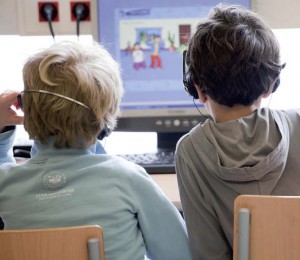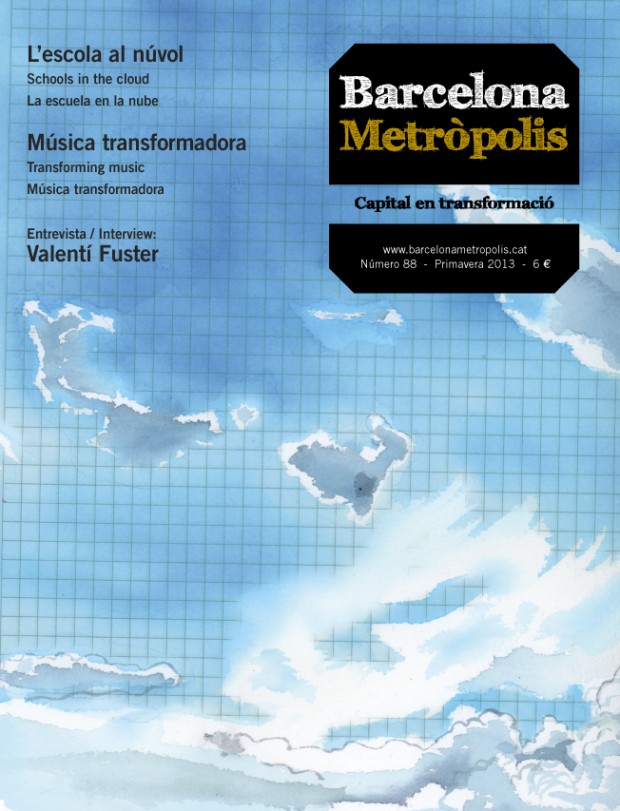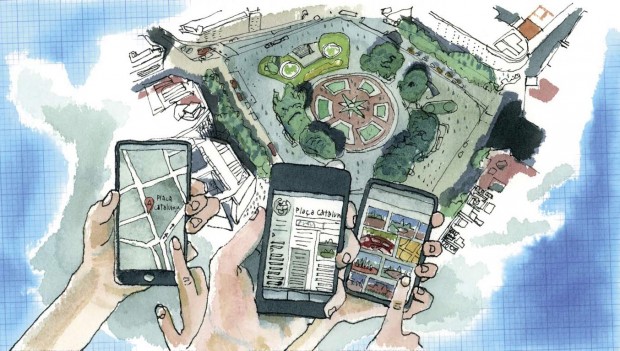Youngsters completing their compulsory education, even those who attain good academic grades, are not sufficiently satisfied with what schools offer them. Nor are their parents, politicians or teaching professionals.
“Imagine an ‘Education Nation’, a learning society where the education of children and adults is the highest national priority, on par with a strong economy, high employment, and national security”… Thus begins Education Nation (2010), the excellent book by Milton Chen (former CEO of Edutopia, George Lucas’s educational foundation). At a time of upheavals across the board, the big question is whether schools will be able to find their position again, if they will be strong enough to rise resolutely to the new challenges, and, above all, if they will be able to structure a society which calls itself the knowledge society but does not yet believe in its name. Because school and education must be the driving force of this dawning new era.
Young people who are currently in compulsory education, even those who get good academic results, are not very satisfied – barring very few exceptions – with what school offers. Neither are parents, politicians or the professionals who work in schools. As a parent, I have enjoyed and suffered the compulsory education of my children, which, by the way, differs very little from my own. I am referring to aspects ranging from the overuse of lectures and textbooks to the very architecture of the classrooms and the distribution of students as if they were in a factory. If I ever have grandchildren, I hope that something will have changed. The school of the 21st century needs to improve in many ways, but in terms of technology it is clear that it will be digital or else it will not be.
In the year 2040, cracks and fractures will still be more social than digital, but they will be even wider and deeper. We will no longer be talking about new technologies, since by then they will be seamlessly integrated into our daily lives. Citizens who besides using them socially acquire the digital and all the other skills defined in the 21st century Skills movement will command positions of responsibility and have the best-paid jobs. There will still be people addicted to social networks and reality shows like Big Brother or MTV’s Jersey, Geordie and Gandia Shores, that is everywhere except in countries where the Ministries of Education and Culture have banned these programmes after warnings such as “the educational and health authorities warn that this programme destroys your neurons” have fallen on deaf ears.
And on the subject of fractures, there will be two groups of countries – those who will have understood all this and those who will not. One group will guarantee equal opportunities, minimise school drop-out rates and assign the resources and budgets necessary to achieve the highest possible level of education for the population. In all probability, one of the best indicators for measuring a country’s wealth will be its investment in and the quality of its educational system. Education Nation.
Education, a burgeoning economic sector
During the first decade of the century, major investments focused on building. In 2040, the knowledge industries will head the world’s stock exchange indexes and we trust that Barcelona will leverage its appeal to attract the most innovative companies. The knowledge acquired in gamification, initially applied to the business world, will be transferred to educational projects, and the best developers will be working more on 3D educational simulations rather than on creating video games. At my grandchildren’s school, three-dimensional recreations based on augmented reality will be a highly effective resource that will facilitate situations of empathy and help students to learn and take in complex concepts.
Flexible and dynamic university systems will replace outmoded and rigid ones. The universities that my grandchildren attend will be nothing like the ones we know. If mobility was the trending topic in the first decade of the century, now it will be flexibility and marketing. In 2040, the benchmark universities will be those that have managed to define the most effective strategies to facilitate citizens’ lifelong learning.
Parents will still read (printed) stories to their kids and will draw with finger paint. But tablets will no longer be seen as a toy, rather as an essential tool in the process of training and development. The applications available in 2040 will be so spectacular that depriving children of these resources will be regarded as an Amish reaction.
The compulsory syllabus will have been revised to become more rational and flexible. Classes will be more about teamwork, subjects as such will disappear and areas will be promoted that facilitate project work. IQ will no longer be used as a measure of a child’s ability, and the big concern will be to develop Gardner’s Multiple Intelligences to the fullest and in a balanced way in each and every child. With fifteen students per class, teachers will not make a once-a-term assessment of whether or not students make the grade, but rather will seek to get the most out of each student in a continual review process, in both the cognitive and the emotional sphere (Gardner’s intrapersonal and interpersonal intelligences). These will be the principles of learning personalisation so staunchly defended by César Coll. By the way, and by virtue of the above, PISA reports will no longer make sense in 2040 and will have disappeared.

The author believes that the applications available by 2040 will be so spectacular that to deprive children of these resources will be considered an amish reaction. Above, an English class using computers at Carlit School.
And in the classroom?
May 2013. We have arranged to meet at Manresa’s train station at 8 am. The fourth-year high school students from Cal Bravat School board the train. The purpose of the field trip is twofold – firstly, to teach them how to get about Barcelona by themselves, and secondly, to learn where the city’s landmarks are and have the three fourth-year classes construct an interactive map. Once on the train, and split into groups of three, they choose five cards at random. Each card has the coordinates and a QR code with basic information about each point. In the course of the hour-long train journey they have to prepare a route, taking the best tube and bus combinations into account. Whenever they locate one of the five points, they have to take a photo with Instagram and add a brief text containing the #calgraBCN hashtag. The pictures taken by each group will appear geo-referenced on a map linked to the school’s website. Faithful to the BYOD (Bring Your Own Device) concept, students can use any gadget they want (tactile tablets, smartphones, etc.) to complete the exercise.
This is a real activity, and the results will be available on the Cal Gravat website as of May 2014 (http://www.calgravat.cat). Many centres are now engaging in similar activities, but these dynamics will be more standard by 2040. We are talking about fieldwork in its traditional meaning, but which incorporates the strategies and technology that are part of our students’ (and our own) lives, and which requires good team work on the part of teachers to organise it. The more resources, methodologies and strategies that we have (including ICT), the better we can respond to students’ needs.





Pingback: L’escola. De la crisi a la revolució | Núvol
A vegades, els que semblem amish a molts som els que, fidels als concepte BOYD, emprem les tecnologies i els dispositius que per algun motiu considerem les adequades, encara que no siguin “el que fa tothom”.
Per exemple, un servidor no té telèfon mòbil intel·ligent —ni dels altres: de fet el que faig servir, només quan vaig d’excursió i sols per emergències, és el de la dona i encara és dels que tenen pantalla amb blanc i negre, sense internet ni càmera—, puc arribar a llegir un codi QR, però m’és un incordi: fer la foto —sempre duc una càmera de debò al damunt—, passar-la a l’ordinador i interpretar-la amb un programa adequat, però òbviament, no a temps real.
Pel mateix motiu d’Instagram res de res, no és una xarxa universal —jo no hi puc penjar de manera raonablement còmoda les meves fotos, i en faig milers cada any—; altres com Panoramio o Flicker —aquesta de pagament— sí que són accessibles de de qualsevol mena de dispositiu i a més permeten col·locar-hi les fots sota llicència lliure. Igualment puc dir de WatsApp, no m’hi puc connectar des dels ordinadors, no m’interessa gens ni mica.
En definitiva, crec que s’ha de ser molt flexible en les eleccions tecnològiques, que no són pas neutrals.
Jordi,
Veig que no has entès el sentit de l’article i fas una interpretació molt esbiaixada del seu contingut (que em sembla molt bé), sense entrar a valorar l’activitat des d’una visió global i la seva aportació en termes educatius.
Si ara ja costa d’entrendre que l’escola evolucioni d’esquena (en molts casos, malauradament) a les Tecnologies de l’Aprenenatge i del Coneixement, d’aqui a 10 anys … evidentment serà considerada una reacció ‘Amish’, per no dir-ne irresponsable. No veig, pel que expliques, que t’hi hagis de sentir identificat. Vaig emprar aquest concepte perquè era el que més encaixava amb el missatge i el sentit que volia donar a l’article.
Em sembla estupendo que utilitzis l’aparell que vulguis i que no facis servir el whatsapp (jo sí que he pecat i l’utilitzo, a banda del correu electrònic) i que tampoc vegis bé que es treballi Instagram (per cert, s’hi pot accedir des d’Android, iOS i des de qualsevol dispositiu mòbil. I és que amb ordinador no té sentit, perquè perd la funció per la qual es va crear l’aplicació).
Sobre el tema de la imatge… a mi també m’agrada la fotografia i sense tenir el nivell que sembla que tu tens, intento treballar-ne alguns aspectes elementals amb els meus alumnes (bàsics, això sí, perque a l’institut hem de seguir unes programacions).
Tornant al principi, t’agraeixo la teva opinió. Vam presentar l’experiència de la Barcelonada 2.0 a la darrera trobada de Qualitat Educativa, davant un públic format per força inspectors i representants dels equips directius de centres educatius catalans que estan aplicant programes ISO. T’he de dir que el feedback (resultat de les enquestes) no coincideixen gens ni mica amb el teu, i això no vol dir que l’activitat no tingui marge de millora (que el té). Et deixo amb la presentació de l’experiència, on podràs veure la justificació pedagògica i els detalls que no vaig poder incloure (per raons òbvies d’espai) a l’article: http://www.slideshare.net/rbarlam/barcelonada-2013-mac-pdf
Pienso que este tipo de educación ” fururista”, no deja de verse bajo la lente de una economía global, porque finalamente la educación será para quienes puedan adquirir esa tecnología y desgraicadamente en la cuestión cultural o atística deja de ser “Humana” y se vuelve impersonal. Dejaran de existir los plantles, y las instituciones seguiran siendo virtuales, con un gran desventaja en la percepción y sencibilidad de estos seres vivos, llamados humanos . Triste.